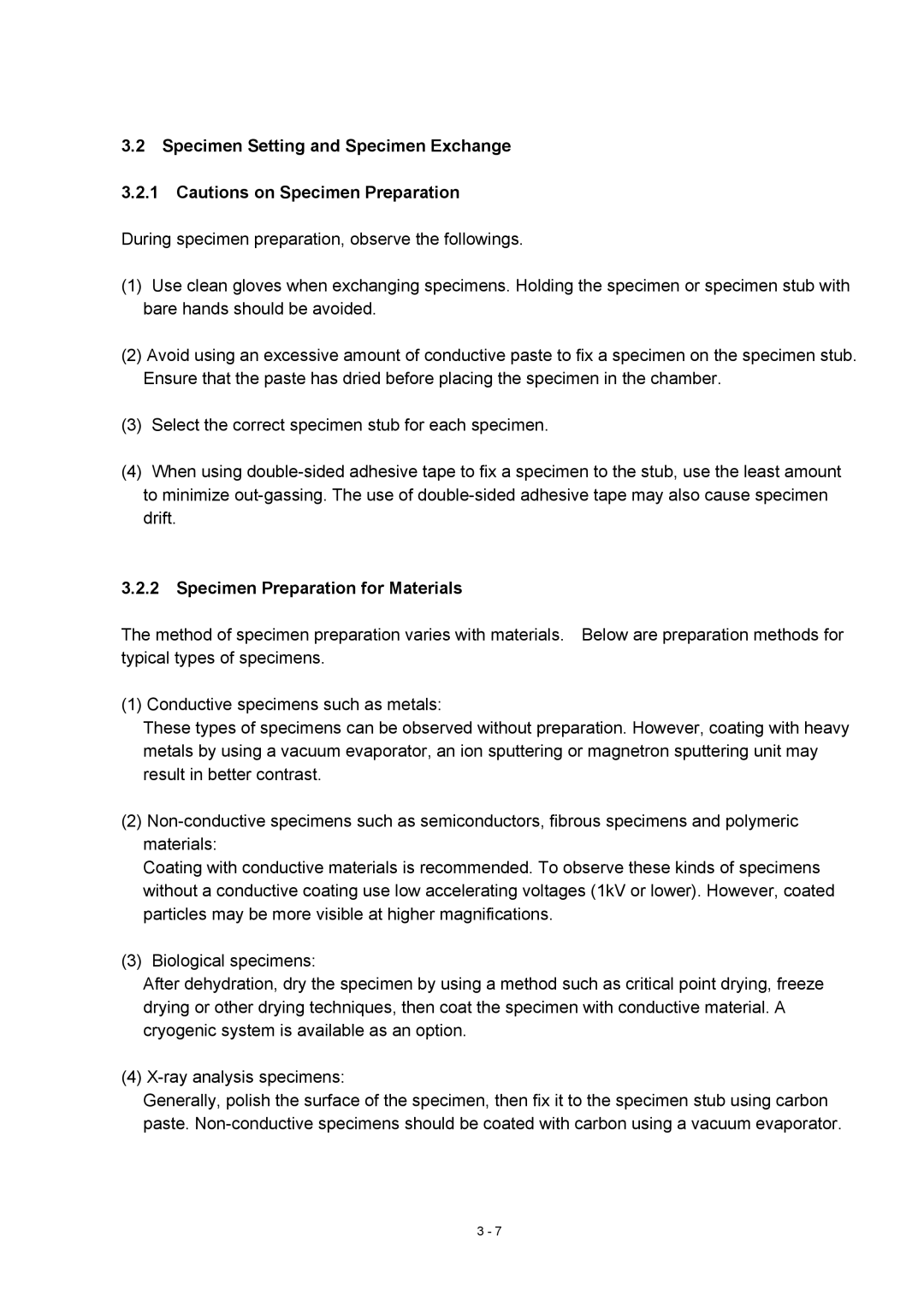3.2Specimen Setting and Specimen Exchange
3.2.1Cautions on Specimen Preparation
During specimen preparation, observe the followings.
(1)Use clean gloves when exchanging specimens. Holding the specimen or specimen stub with bare hands should be avoided.
(2)Avoid using an excessive amount of conductive paste to fix a specimen on the specimen stub. Ensure that the paste has dried before placing the specimen in the chamber.
(3)Select the correct specimen stub for each specimen.
(4)When using
3.2.2Specimen Preparation for Materials
The method of specimen preparation varies with materials. Below are preparation methods for typical types of specimens.
(1) Conductive specimens such as metals:
These types of specimens can be observed without preparation. However, coating with heavy metals by using a vacuum evaporator, an ion sputtering or magnetron sputtering unit may result in better contrast.
(2)
Coating with conductive materials is recommended. To observe these kinds of specimens without a conductive coating use low accelerating voltages (1kV or lower). However, coated particles may be more visible at higher magnifications.
(3)Biological specimens:
After dehydration, dry the specimen by using a method such as critical point drying, freeze drying or other drying techniques, then coat the specimen with conductive material. A cryogenic system is available as an option.
(4)
Generally, polish the surface of the specimen, then fix it to the specimen stub using carbon paste.
3 - 7
